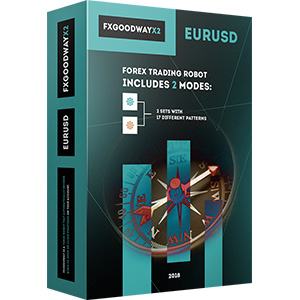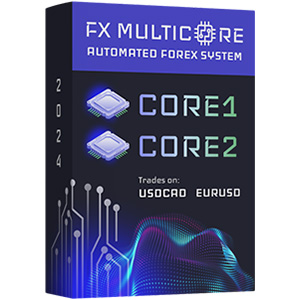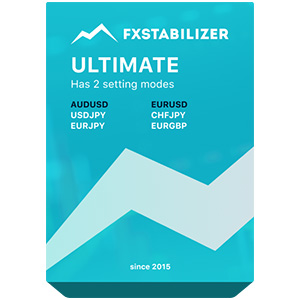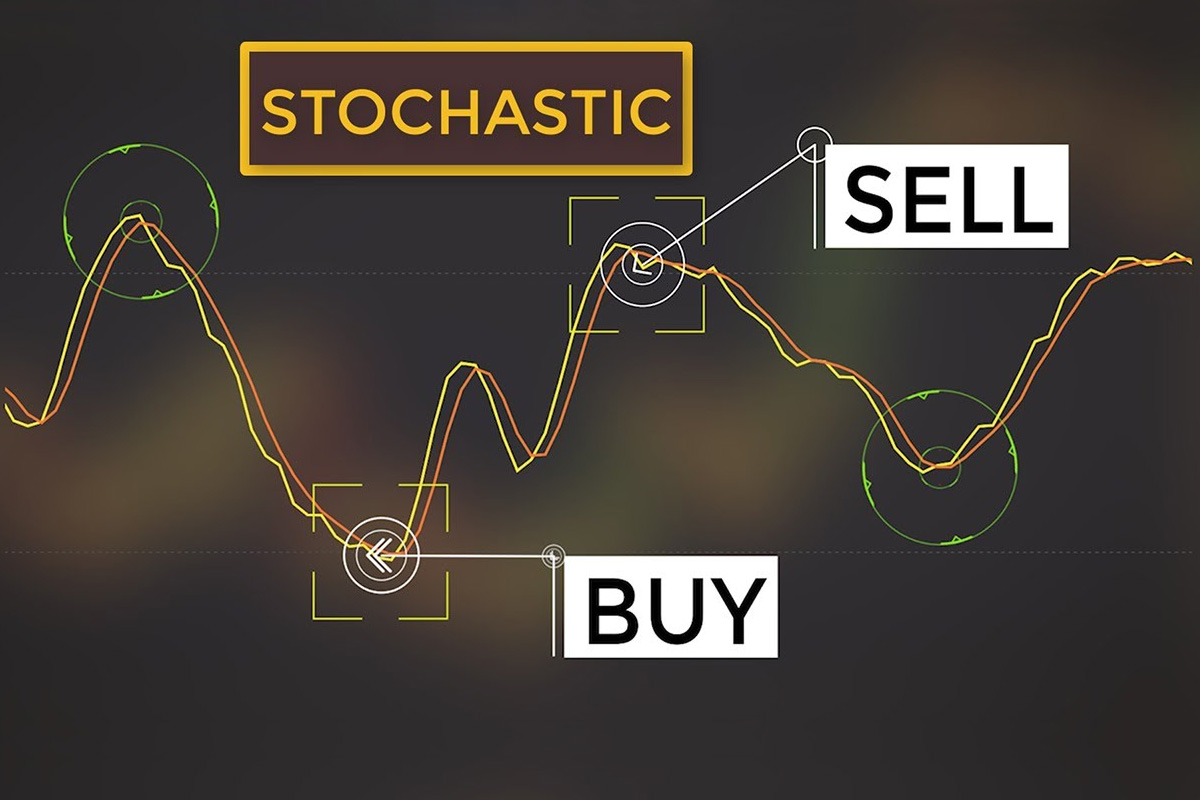
The Stochastic oscillator has been known to traders since the 1950s, and it remains one of the favorite tools used in both stock market and Forex trading. Thanks to its versatility and accuracy, it is considered one of the essential technical indicators that every trader should be familiar with. So, what is stochastic in Forex trading, how does it work, and how will it help you earn more?
Understanding the Stochastic Oscillator
Let's start with the theory, specifically the question: what is stochastic oscillator in Forex trading? Understanding the features of this tool also involves knowing how to use stochastics in Forex trading.
So, the stochastic oscillator is an indicator that clearly indicates the end of a trend. If the trend is upward, it signals to the trader that prices will either remain at the previous level or continue to rise. In the case of a downward trend, the previous closing price will be higher than the price. In other words, stoch Forex measures and reacts to the price momentum, as it is the first indicator to change direction, and the price follows suit. On the chart, it looks similar to the MACD since it also has two lines that traders use to make decisions regarding their assets.
Summary: Forex stochastic indicator is explained as a comparison between the closing price and the range of highs and lows, and it predicts potential price movements before they actually happen.
The Basics of the Stochastic Forex Strategy
Let's move from theory to practice — how to use stochastic indicator in Forex trading? This trading tool allows you to assess the overbought or oversold conditions of a particular asset and also signals potential price reversals. This opens up an excellent opportunity for traders to identify the optimal time and price for buying or selling their assets, leading to potentially profitable trades.
It all works quite simply:
- The lines move within a range from 0 to 100.
- When the lines cross above the 80 level, the indicator indicates that the asset is overbought in the market.
- When the lines drop into the range from 20 to 0, it signals that the asset is oversold.
Traders often don't need to interpret these signals further as they are straightforward and easily confirmed by other indicators. All that remains is to respond to the market situation accordingly and apply your trading strategy based on your short-term or long-term forecast.
Based on the stochastic oscillator Forex readings, you can decide to sell on overbought signals, buy on impulses, hedge against prolonged risks, or even ignore this information altogether. Your subsequent actions will depend entirely on your trading style, approaches, investment goals, and other factors. If you have any doubts about how to act in a given situation, additional tools for technical or fundamental analysis can help bring clarity and enable you to make well-considered and informed trading decisions.
In essence, when the stochastic strategy Forex line enters the oversold range, traders buy, and conversely, when the line is in the overbought range, positions are opened for selling. However, you should not automatically react to the indicator readings exactly in that way. The indicator lines may stay within a specific range for an extended period, so the most effective strategy is to use additional support and resistance lines, as well as moving averages (MA).
Setting Up the Stochastic Indicator
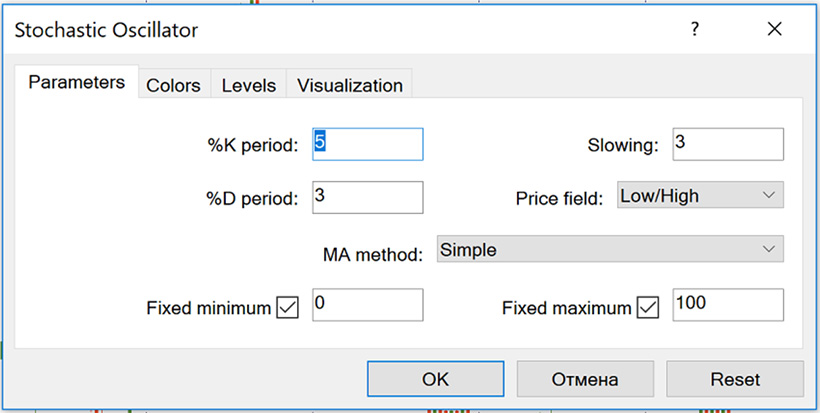
The Forex trading stochastic indicator is one of the primary tools on the MetaTrader 4 and 5 platforms, and configuring it on these platforms is extremely simple. Just add it to the chart (found in the "Indicators" menu — "Stochastic Oscillator").
By default, it has the settings 5, 3, 3. In addition to these default settings, traders also use several variations:
- Fast Stochastic (5, 4): It reacts very quickly to price changes.
- Slow Stochastic (14, 3): These settings help filter out false signals.
- Full Stochastic (14, 3, 3): A balanced setting that optimally reacts to market changes but rarely gives false signals.
Often, parameters like 14, 3, 3, and alongside them 21, 5, 5, are also used.
Stochastic Forex Strategy: Buy Signals

The stochastic signals Forex indicator does not provide 100% certainty of when to buy or sell assets. To get a clear buying signal, it is worth considering the trend in a broader timeframe.
Also, pay attention to stochastic divergence Forex: if there is a divergence with the price chart. A buy signal occurs when the price reaches a lower low while the oscillator reaches a higher low. This situation occurs when the bearish momentum lacks strength, indicating potentially profitable trades.
Stochastic Forex Strategy: Sell Signals
When discussing how to use the stochastic oscillator in Forex, we have already mentioned that a signal for selling is provided by the indicator reaching 80 and above (overbought zone). However, you can optimize your stochastic Forex trading strategy by using the following secrets:
- Look for a bearish crossover when the %K line crosses below the %D line. Such a crossover indicates that the existing trend is losing momentum, and it's a good time to enter the market with sell orders.
- Confirm your observations with Price Action, and if you spot bearish candlestick patterns or other deviations at resistance levels, it can be interpreted as a sell signal.
- Make sure not to open trades against the prevailing trend, as it may turn out to be an unfavorable decision.
By understanding these nuances, you can master the stochastic Forex trading system and use it for effective trading and multiplying your investments.
Applying Risk Management in Stochastic Forex Strategy
Risk management is the foundation you should acquire before starting trading on a live account. Even though the stochastic indicator Forex is highly reliable, risk management will help protect your funds, allowing you to earn more and have fewer losing trades.
- Trade within an acceptable risk level based on the funds you realistically have at your disposal. Trading with leverage can be profitable, but you should use this tool cautiously.
- Always set a Stop Loss for each trade — in case the trade becomes unfavorable for you, the order will automatically close. You can also use the best Forex robots, especially if you are a beginner. This will help you make professional decisions automatically and accelerate your mastery of Forex trading.
- Determine a take-profit level that prevents your emotions and impulses from taking over, and avoid staying in trades longer than necessary.
- If you're not a fan of day trading or don't use a scalping strategy, avoid opening too many trades simultaneously. This will reduce the workload, and you will be able to control everything without effort.
Be prepared in advance that certain trades may turn out to be unsuccessful, despite all efforts. This is not a failure but a part of the learning process. Analyze your activities over a specific period, draw conclusions, and proceed accordingly.
Advanced Techniques and Considerations
Applying the stochastic signals Forex indicator along with advanced trading techniques allows traders to execute their operations more confidently and efficiently, optimizing their strategy and making it more effective.
Analyze multiple timeframes for comprehensive data
To eliminate false signals, use the stochastic oscillator on several timeframes. This will provide you with a broader view of the market and a better understanding of what is actually happening. Sometimes, using the oscillator on a 1-hour chart while examining data from a 4-hour timeframe can confirm or refute your forecasts. Either way, this approach safeguards you against impulsive trading decisions and allows you to identify real trends and price movements.
Utilize stochastic divergence to your advantage
When the stochastic oscillator indicates highs or lows while the price remains unchanged, a phenomenon called divergence occurs. It can be bullish or bearish. Bullish divergence suggests potential price reversals upward, while bearish divergence warns of potential price movements downward. Both scenarios can be advantageous under specific conditions, but it's essential to identify these opportunities promptly, making tracking divergences a valuable tool in your trading arsenal.
Use moving averages, RSI, MACD, and other indicators to gain comprehensive and clear market insights
These and other technical indicators enable you to reduce the number of false signals and help you focus on charts that have the potential to lead you to profitable trades and good returns. In particular, trend lines and moving averages are the best ways to identify potential price reversal points. By combining these indicators with the data you receive from the oscillator, you can make well-informed decisions regarding your assets.
Discipline is a trader's best friend
Remember to continuously test and optimize your strategy, adjust the most appropriate oscillator parameters, and manage risks following the above scheme. Enter trades where the potential profit significantly outweighs the risk, and avoid trades where the risk-reward ratio is clearly not in your favor. If you are new to trading, try to avoid trading during the release of major economic news that can substantially impact market stability. Even professional and experienced traders sometimes struggle with this volatility and respond to false signals, so it's better to ignore certain signals to prevent them from working against you.
You can also learn a lot about protecting your assets during trading by following tips from the detailed guide we have prepared for you.
Backtesting and Practice
Backtesting allows you to continuously adapt your strategy to changing market conditions and outperform your peers. However, backtesting is impossible without constant practice, as it is through practice that you can identify the nuances you want to change or improve. To act systematically rather than chaotically, consider these tips as your foundation:
- Verify historical price movement data over a specific period.
- Manually check the signals obtained from your testing.
- Maintain a trading journal and analyze your own records to promptly identify the pros and downsides of your strategy.
- Don't ignore the possibility of automating routine processes.
- Optimize the oscillator settings to match your trading style.
- Gradually increase trade volumes, only after confirming the effectiveness of the majority of previous decisions.
Don't stop learning and always be prepared to adapt and adjust to any changes, as the Forex market is highly dynamic and constantly evolving.
The Bottom Line
The Stochastic oscillator is ready to become your faithful assistant and help you effectively and fairly accurately identify overbought and oversold areas, providing clear signals for buying or selling assets. However, you should thoroughly study this tool, understand its settings, and test and optimize your strategy before applying it to large trades.




